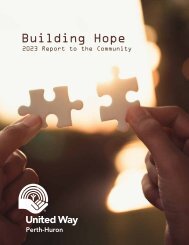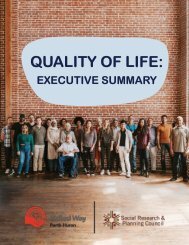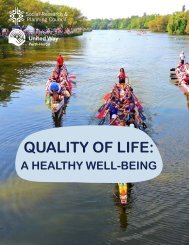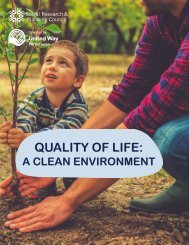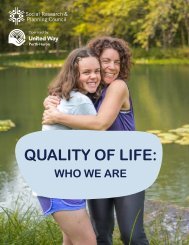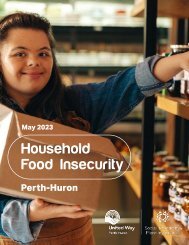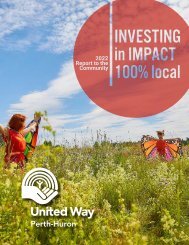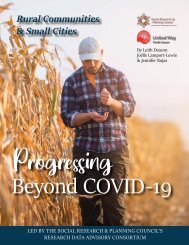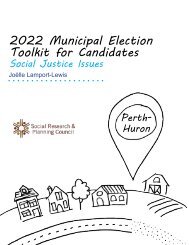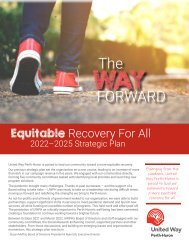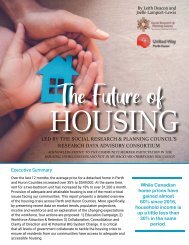2021 Supportive Housing Report
This report is designed to help enhance an understanding of homelessness and the role supportive housing can play within a larger strategy to end chronic homelessness. It provides an overview of best practices being implemented to address chronic homelessness; references supportive housing strategies that help people with the most complex mental health and addiction needs to stabilize their housing; and offers strategic actions for consideration to support the Huron and Perth communities toward achieving their goals of eradicating chronic homelessness and supporting their most vulnerable citizens.
This report is designed to help enhance an understanding of homelessness and the role supportive housing can play within a larger strategy to end chronic homelessness. It provides an overview of best practices being implemented to address chronic homelessness; references supportive housing strategies that help people with the most complex mental health and addiction needs to stabilize their housing; and offers strategic actions for consideration to support the Huron and Perth communities toward achieving their goals of eradicating chronic homelessness and supporting their most vulnerable citizens.
Create successful ePaper yourself
Turn your PDF publications into a flip-book with our unique Google optimized e-Paper software.
What is Homelessness?<br />
Recent years have seen federal, provincial, and<br />
municipal governments across Canada put a renewed<br />
focus on homelessness and housing affordability. The<br />
National <strong>Housing</strong> Strategy, released in 2017 lays out a<br />
10-year plan that promises to “remove 530,000 families<br />
from housing need, cut chronic homelessness by 50%<br />
and change the face of housing in Canada forever” 5 .<br />
Ontario’s Policy Statement for Service Manager <strong>Housing</strong><br />
and Homelessness Plans 6 is even more aggressive and<br />
includes a specific goal of ending chronic homelessness<br />
by 2025-26 in the province.<br />
Homelessness is not strictly an issue of housing<br />
instability. The Canadian government defines<br />
homelessness as follows:<br />
“Homelessness is the situation of an individual<br />
or family who does not have a permanent<br />
address or residence; the living situation of an<br />
individual or family who does not have stable,<br />
permanent, appropriate housing, or the<br />
immediate prospect, means and ability of<br />
acquiring it.<br />
It is often the result of what are known as<br />
systemic or societal barriers, including a lack of<br />
affordable and appropriate housing, the<br />
individual/household’s financial, mental,<br />
cognitive, behavioural or physical challenges,<br />
and/or racism and discrimination.” 7<br />
The Canadian Observatory on Homelessness (COH) also<br />
adds, “Most people do not choose to be homeless, and<br />
the experience is generally negative, unpleasant,<br />
unhealthy, unsafe, stressful and distressing.” 8<br />
Chronic homelessness refers to episodes of<br />
homelessness that typically become more entrenched<br />
and ingrained in people’s daily lives due to their long<br />
duration, which may be continuous or episodic. The<br />
Canadian government defines chronic homelessness as<br />
“individuals who are currently experiencing<br />
homelessness AND who meet at least 1 of the following<br />
criteria:<br />
• They have a total of at least 6 months (180 days) of<br />
homelessness over the past year<br />
• They have recurrent experiences of homelessness<br />
over the past 3 years, with a cumulative duration of<br />
at least 18 months (546 days)” 9<br />
The COH further illuminates the complexity of the range<br />
of homelessness by categorizing peoples’ experiences of<br />
homelessness into four typologies as follows:<br />
1. Unsheltered, or absolutely homeless and living on<br />
the streets or in places not intended for human<br />
habitation (often referred to as “living rough”),<br />
2. Emergency Sheltered, including those staying in<br />
overnight shelters for people who are homeless,<br />
as well as shelters for youth and those impacted<br />
by family violence,<br />
3. Provisionally Accommodated (often referred to<br />
as ‘couch surfers’ and ‘hidden homeless’) refers<br />
to those whose accommodation is temporary or<br />
lacks security of tenure, and finally,<br />
4. At Risk of Homelessness, referring to people who<br />
are not homeless, but whose current economic<br />
and/ or housing situation is precarious or does<br />
not meet public health and safety standards. See<br />
Appendix B for the COH’s detailed Typology of<br />
Homelessness in Canada.<br />
The above definitions of homelessness encourage a<br />
visceral understanding of the challenges faced and the<br />
pain endured by those experiencing homelessness.<br />
However, even a thoughtful and well-designed<br />
definition cannot capture the breadth and complexity of<br />
homelessness. The COH cautions that their definition<br />
“does not fully encompass every experience of<br />
homelessness”. 10 Acknowledging that different groups<br />
of people are affected differently by homelessness, and<br />
that their collective experience is unique, COH has two<br />
additional definitions for Youth 11 and Indigenous 12<br />
homelessness. As local communities design solutions<br />
these differences should be understood and honoured.<br />
Chronically homeless people are often an older<br />
population who have experienced long‐term<br />
unemployment and are more likely to suffer from<br />
disabilities, mental and physical health problems, and<br />
addictions. People in this situation access a high level of<br />
emergency services and institutional supports.’ 13<br />
2 <strong>Supportive</strong> <strong>Housing</strong>



